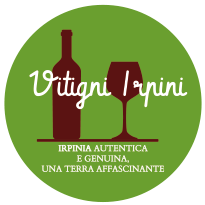Campania Bianco "Grecomusc' " IGT - Cantine Lonardo
Campania Bianco "Grecomusc' " IGT - Cantine Lonardo
Couldn't load pickup availability
Grape variety : 100% Rovello Bianco
Production area: On the plateaus of Taurasi, Mirabella Eclano and Bonito, in Irpinia
Soil type : The soil appears varied, with a prevalence of loose soils, rich in volcanic ash and/or limestone.
Rootstock : Mostly grafted, in some cases also free-grafted
Vineyard exposure : various exposure zones
Altitude of the vineyards: 300 – 500 m above sea level.
Training system: Mixed Guyot – Pergola Avellinese
Production : 2500 bottles
Description
Native white grape known in the past in Irpinia with the name of “Grecomusc'” but registered since 2009 in the list of native Italian vines with the name of “Rovello” or “rovello bianco”. The name coined by local winemakers is linked to the more famous “Greco” vine, even if it has no kinship with it. It was simply used for a long time as a blending grape for Greco. Rovello bianco has a large but sparse bunch and the grape has the singular characteristic that the skin grows out of proportion with respect to the internal pulp and thus generates the unmistakable appearance of flaccid grapes, “Grecomusc'” precisely. This generates a solid/liquid ratio to the detriment of the latter, and generates winemaking conditions with a low liquid yield. The Lonardo winery has succeeded, with years of testing and selection, in taking advantage of these characteristics, producing today an absolutely unique wine with an unmistakable character, which fully reflects the production philosophy of the company and its technicians, aimed at producing wines that are an absolute expression of the territory and production personality.
Winemaking
The grapes are harvested manually and immediately transported to the cellar in 18 kg boxes, where they are crushed and destemmed and vinified with maceration at room temperature for about 2 hours. After racking, the fermentation is managed at a temperature of 18°C. At the end of the fermentation, a racking is carried out to separate the coarse lees into steel containers where it rests for about 6/8 months on fine lees. After several rackings for clarification, it is bottled with coarse filtration through inert cartridges with a porosity of 3 microns.
Tasting
Unique wine, it has an intense straw color with clear golden reflections, consistent and voluminous; intense and persistent on the nose with clear mineral hints accompanied by yellow flowers, peaches in syrup and vanilla. Dry on the palate with great intensity and good persistence, warm and savoury, it retains a good acid consistency that makes it pleasant to drink and long-lived over time, if well preserved it makes the greatest expressiveness of the character of "terroir" wine two or more years after the harvest.
Pairing
It is certainly a wine for fresh foods of Mediterranean cuisine based on shellfish, even baked, vegetable flans, up to fresh or slightly matured cheeses such as all caciocavallo, sheep and goat caciotta, buffalo mozzarella, ideal to accompany Italian appetizers with lightly salted cold cuts, vegetables in oil and vinegar, or with vegetable first courses, without sauce.
It should be served at a temperature of 10-12°C


